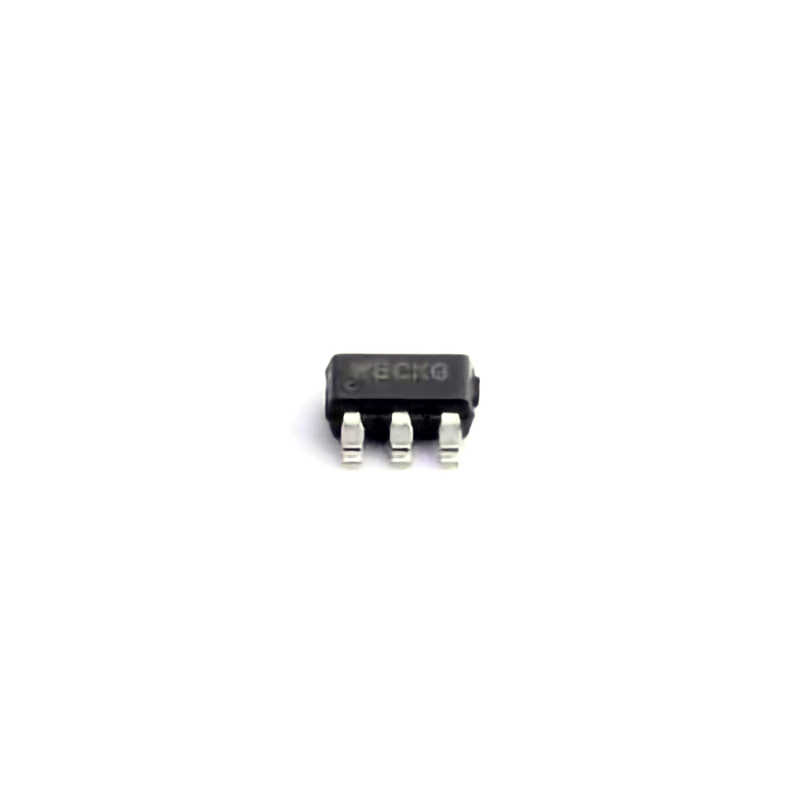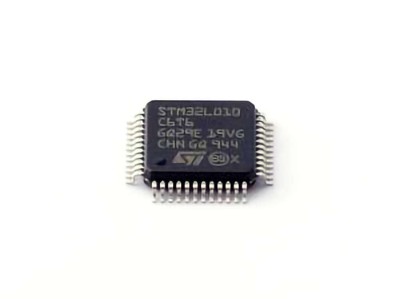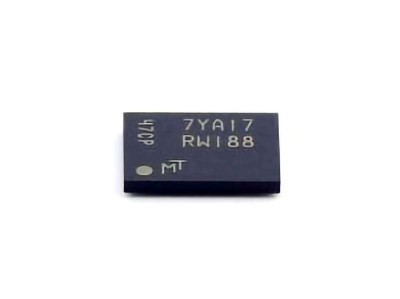
Understanding the SY8120B1ABC and Common Issues
The SY8120B1ABC is a sophisticated Power management IC (PMIC) designed for a range of applications, from consumer electronics to industrial systems. Power management ICs like the SY8120B1ABC are integral in managing the voltage, current, and power distribution to various components in a circuit, ensuring smooth operation and preventing damage to sensitive components.
While the SY8120B1ABC is known for its reliability, users may encounter issues that affect its performance. Understanding the causes of these issues and how to troubleshoot them is essential for maintaining the device’s functionality. In this first part, we’ll dive into the most common problems that users face with the SY8120B1ABC and how to diagnose them effectively.
Common Issues with the SY8120B1ABC
Incorrect Output Voltage
One of the most common issues with the SY8120B1ABC is an incorrect output voltage. Since the IC regulates voltage to various parts of the circuit, any deviation can lead to system instability, component failure, or malfunction.
Possible Causes:
Incorrect feedback resistor values: The SY8120B1ABC uses an external resistor divider for feedback, which sets the output voltage. If these resistors are incorrectly placed or the wrong values are used, the output voltage will be inaccurate.
Faulty components: Components like Capacitors or resistors in the feedback loop or the voltage regulation circuit can degrade over time or fail, leading to instability in the output voltage.
Improper input voltage: The input voltage supplied to the IC may not meet the required threshold, which can cause it to malfunction and produce an unstable output.
Solutions:
Verify the input voltage to the SY8120B1ABC to ensure it is within the specified range.
Check the feedback loop for proper resistor values. The datasheet provides guidelines for selecting appropriate resistors based on the desired output voltage.
Inspect components for signs of wear or damage and replace any faulty parts.
Overheating and Thermal Shutdown
Power management ICs like the SY8120B1ABC generate heat during operation. If the heat dissipation is insufficient, the IC may overheat, triggering a thermal shutdown to protect itself from damage.
Possible Causes:
Inadequate cooling: The system might not have sufficient heat sinks or airflow to dissipate the heat generated by the IC.
High load conditions: If the IC is supplying power to components that require more current than it is rated for, it may overheat.
Insufficient PCB design: If the PCB is not designed to handle the heat generated by the IC, it could lead to excessive temperatures.
Solutions:
Ensure that the system has adequate cooling solutions, such as heat sinks, fans, or proper ventilation around the IC.
Review the current requirements of the load connected to the SY8120B1ABC to ensure they are within the IC’s specifications.
If necessary, revise the PCB layout to enhance thermal management, such as adding thermal vias and increasing copper area for better heat dissipation.
Poor Load Regulation
Load regulation refers to the ability of a power supply to maintain a stable output voltage when the load changes. Poor load regulation can cause voltage fluctuations that affect the performance of connected components.
Possible Causes:
Insufficient output capacitor s: The SY8120B1ABC requires proper output capacitors to stabilize the output voltage and minimize noise. If the capacitor values are too low or the wrong type, load regulation can degrade.
Instability in the feedback loop: If the feedback network is unstable or poorly designed, the regulator may fail to provide proper voltage regulation under varying loads.
Excessive load: If the load connected to the output exceeds the IC’s maximum current rating, it can cause the voltage to dip or fluctuate.
Solutions:
Ensure the correct output capacitor values are used, as recommended in the datasheet, to ensure stable load regulation.
Verify the stability of the feedback loop by checking the resistors and capacitors in the feedback network.
Use a multimeter or oscilloscope to monitor the output voltage under different load conditions to confirm proper regulation.
Startup Failures or Power-On Issues
Another common issue with power management ICs like the SY8120B1ABC is failure to start up correctly or power-on issues. These problems can occur due to incorrect wiring, power sequencing issues, or internal faults.
Possible Causes:
Power sequencing problems: If the input voltage rises too quickly or is not within the proper range during startup, the IC may not power on correctly.
Faulty soft-start mechanism: The SY8120B1ABC uses a soft-start feature to gradually ramp up the output voltage. If this mechanism fails, the IC may experience instability during startup.
Faulty external components: External components such as capacitors, resistors, or diodes may not function correctly, preventing the IC from starting up.
Solutions:
Check the power-up sequence to ensure that the input voltage is within the specified range and rises at the correct rate.
Inspect the soft-start capacitor and other related components for any issues and replace them if necessary.
Verify that all external components are correctly placed and function properly, as specified in the datasheet.
Noise and Ripple Issues
Noise and ripple in the output voltage can be a significant issue, especially in sensitive applications like audio or communication systems. The SY8120B1ABC, like all power ICs, generates some degree of ripple, but excessive noise can interfere with the performance of the circuit.
Possible Causes:
Insufficient filtering: The output filter capacitors may not be large enough to smooth out the ripple or may be of poor quality.
Poor layout: A poor PCB layout can result in noise coupling from other parts of the circuit, leading to ripple in the output voltage.
High-frequency switching: Power ICs like the SY8120B1ABC operate at high frequencies, and if not properly managed, these frequencies can generate noise.
Solutions:
Increase the value of the output filter capacitors or use high-quality ceramic capacitors to reduce ripple and noise.
Review the PCB layout to minimize noise coupling. Keep sensitive traces away from high-current paths, and use ground planes and proper decoupling techniques.
If noise is still present, consider adding additional passive components such as ferrite beads or inductors to further filter out high-frequency noise.
Conclusion of Part 1
The SY8120B1ABC is a reliable power management IC, but like any complex electronic component, it can experience issues. By understanding the common problems associated with the device—such as incorrect output voltage, overheating, poor load regulation, startup failures, and noise issues—you can effectively troubleshoot and resolve these issues. In the next part of this article, we will explore additional troubleshooting techniques, best practices for maintenance, and how to extend the lifespan of your SY8120B1ABC to ensure optimal performance in your systems.
Advanced Troubleshooting and Best Practices for SY8120B1ABC
In Part 1, we covered common issues with the SY8120B1ABC power management IC and their solutions. In this section, we will explore advanced troubleshooting techniques, best practices for maintaining the IC, and how to ensure long-term reliability and optimal performance in your applications.
Advanced Troubleshooting Techniques
Using an Oscilloscope to Diagnose Ripple and Noise
An oscilloscope is an invaluable tool for diagnosing ripple, noise, and other transient issues with the SY8120B1ABC. By capturing the waveform of the output voltage, you can quickly identify problems such as high-frequency noise, excessive ripple, or instability in the output voltage.
Procedure:
Set the oscilloscope to measure the output voltage of the SY8120B1ABC.
Use a differential probe if available, as it will provide more accurate measurements without introducing noise.
Observe the waveform for any irregularities such as spikes, dips, or excessive ripple. Compare the measured waveform with the expected output from the datasheet.
Troubleshooting:
If you notice excessive ripple or noise, check the output filtering capacitors, PCB layout, and grounding.
If the waveform shows instability or large voltage swings, inspect the feedback loop and power components for possible faults.
Thermal Imaging for Overheating Issues
Overheating is a common issue with power ICs, and it can be difficult to diagnose just by checking voltages. A thermal imaging camera is a great tool to visually identify hotspots on the IC or surrounding components that may be causing excessive heat buildup.
Procedure:
Use the thermal imaging camera to scan the board under typical operating conditions.
Look for hot spots around the SY8120B1ABC or components that may be contributing to thermal stress.
Check the temperature of the input and output components to ensure they are within acceptable ranges.
Troubleshooting:
If hotspots are detected, improve cooling solutions, such as adding heat sinks or increasing airflow.
Verify that the power load is within the IC's specifications to avoid overloading.
Voltage and Current Monitoring for Load Regulation Issues
Monitoring the current and voltage during operation can help identify load regulation issues. A high-quality multimeter or dedicated current probe can help detect voltage drops or irregular current flows that could indicate problems with the regulation circuit.
Procedure:
Measure the output voltage while varying the load to see how it responds to changes in demand.
Check for any significant voltage deviation as the load increases or decreases.
Measure the current drawn by the load to ensure it is within the SY8120B1ABC’s rated capacity.
Troubleshooting:
Significant voltage deviation may indicate issues with the feedback loop or inadequate output capacitors.
If the current draw exceeds the IC's maximum rating, reduce the load or consider using a higher-capacity power supply.
Best Practices for Maintaining the SY8120B1ABC
Regularly Check the Input Voltage
One of the most critical factors in ensuring the SY8120B1ABC operates correctly is maintaining a stable and correct input voltage. Regularly check the input voltage to ensure it is within the range specified in the datasheet. Fluctuations or dips in input voltage can cause instability in the output.
Ensure Proper Capacitor Selection
Capacitors play a crucial role in maintaining stable operation. Both input and output capacitors should be chosen based on the IC’s requirements. Use low-ESR (Equivalent Series Resistance ) capacitors to ensure stable performance, particularly at high frequencies.
Review PCB Layout for Thermal and Electrical Efficiency
A well-designed PCB can significantly enhance the performance of the SY8120B1ABC. Ensure that the layout minimizes noise coupling, optimizes thermal dissipation, and follows the guidelines provided in the datasheet. Pay attention to the placement of power and ground traces to reduce the potential for interference.
Use Adequate Cooling Solutions
As power ICs can generate significant heat, ensuring proper heat dissipation is essential. Use heat sinks, proper thermal vias, and adequate airflow to keep the SY8120B1ABC within safe operating temperatures.
Extending the Lifespan of the SY8120B1ABC
To ensure that the SY8120B1ABC continues to perform reliably over time, follow these tips to extend its lifespan:
Avoid Overloading: Always ensure that the connected load does not exceed the IC’s maximum current rating.
Prevent Overheating: Implement effective thermal management strategies to prevent excessive temperatures, which can degrade the IC’s performance.
Regular Maintenance: Periodically inspect the circuit and components for signs of wear, damage, or degradation. Replacing worn-out components before they fail can prevent costly downtime.
Conclusion
The SY8120B1ABC is a versatile and reliable power management IC that, when properly maintained and correctly implemented, can deliver excellent performance in various applications. By understanding common troubleshooting techniques, using advanced diagnostic tools, and adhering to best practices for maintenance, you can ensure that your SY8120B1ABC runs smoothly for years to come. Whether you are working in a lab, an industrial environment, or in consumer electronics, these insights will help you tackle any challenges and keep your systems running optimally.
Partnering with an electronic components supplier sets your team up for success, ensuring the design, production, and procurement processes are quality and error-free.

